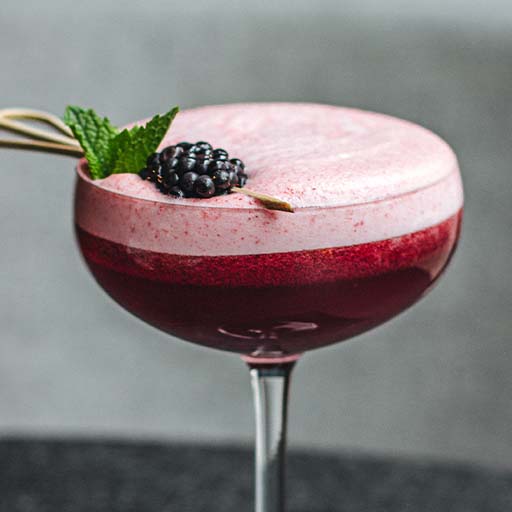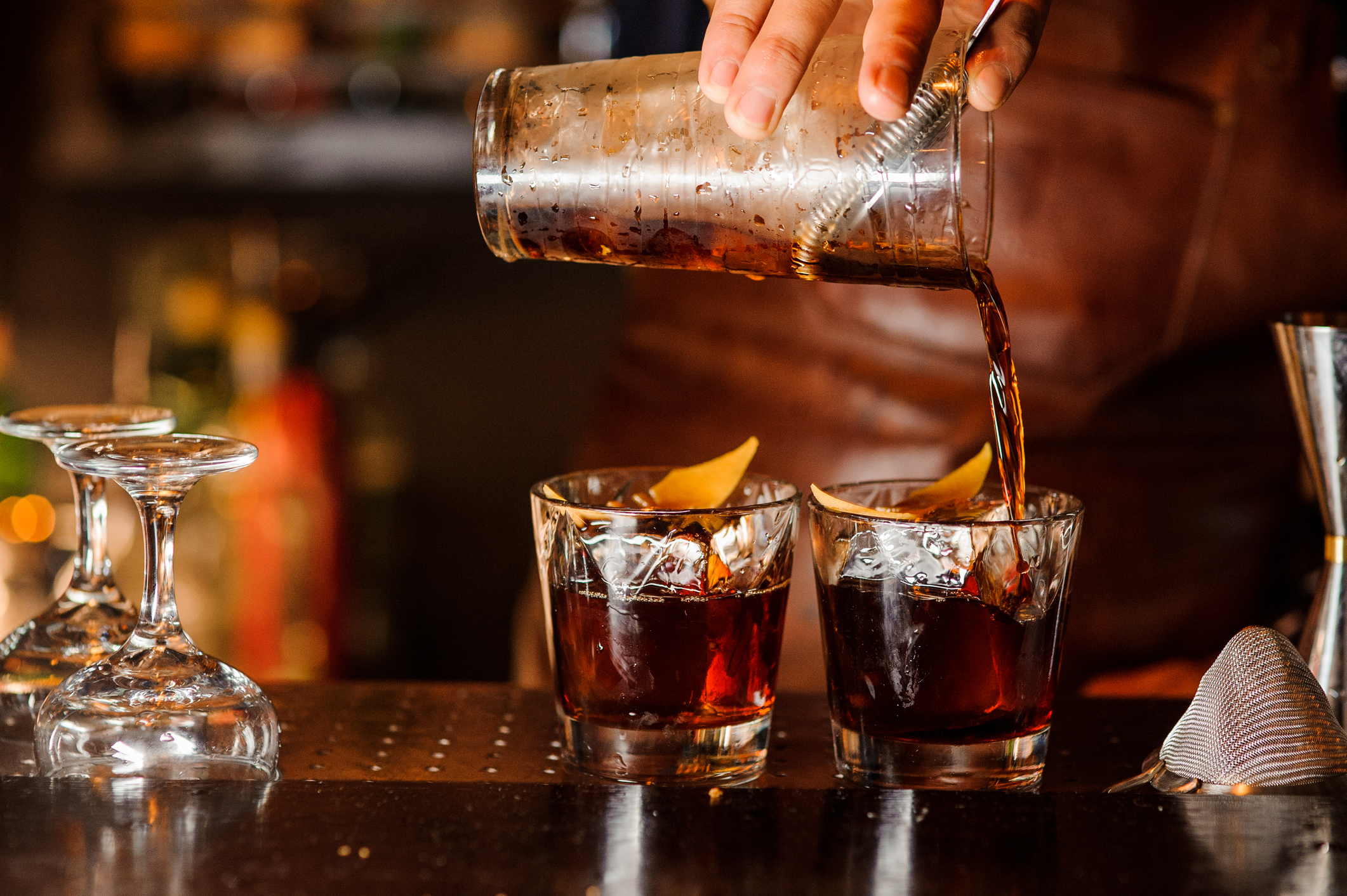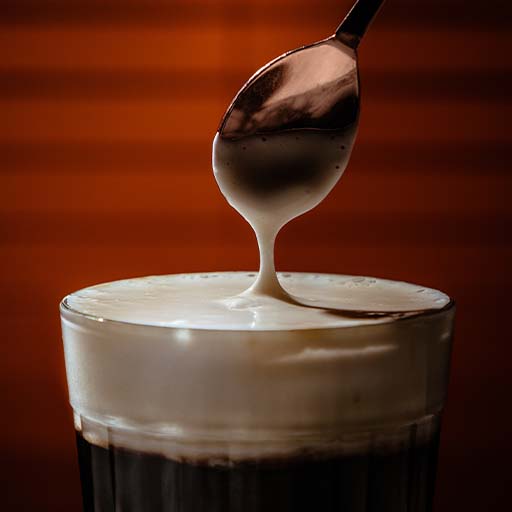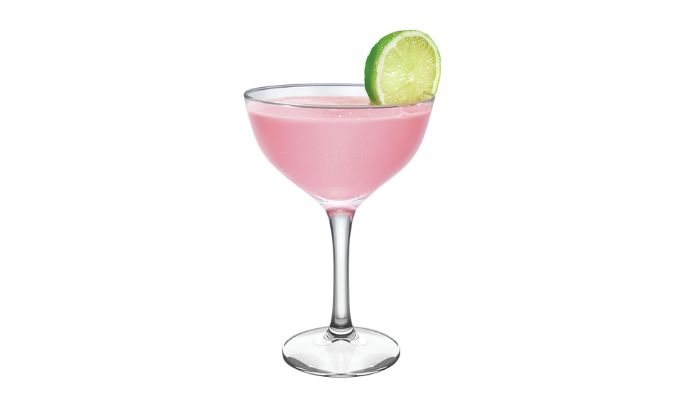Practise carbonisation with the Mexican Rose Cocktail, a fresh and zesty cocktail that will impress guests.

A Guide to Carbonation in Cocktails
Carbonating cocktails can enhance guests sensory experience of drinks. Discover how to achieve optimal carbonation in your cocktails.
Estimated reading time: 5 minutes
Carbonation is the process of dissolving carbon dioxide (CO2) in a liquid under pressure. When this pressure is released, such as when uncapping a bottle, the CO2 manifests as bubbles. However, carbonating a cocktail is more than just introducing bubbles. It's about enhancing the sensory experience of the drink, and a burst of carbonation on the tongue can transform an otherwise flat cocktail into a lively, memorable experience. Carbonation has long been a widely used element in the beverage industry, with its effervescent charm adding a unique and tactile dimension to drinks. This effervescence enhances aroma and delivers a unique flavour profile in cocktails.
Join us as we explore the techniques, tools, and best practices to achieve optimal carbonation in your cocktails.
KEY CARBINATION TOOLS
Carbonation Rig
There are numerous ways to carbonate beverages. Selecting the best one will depend on what you plan to carbonate, the volumes you need to carbonate and, of course, budget and other available resources (like space).
Some methods can also work better than others in specific applications, so it’s essential to understand the properties of your chosen liquid. Below is a selection of carbonation methods commonly used in bars.
1. HOME-MADE SYSTEM
Many bars and bartenders have opted for homemade carbonation systems that provide versatility and adaptability to requirements and budgets. There are numerous tutorials available on how to set up a system; however, most consist of the following:
A canister of CO2
A regulator to control the flow of gas
A carbonation bottle, canister or keg
Many use “carbonator caps” – an adaptor that allows the connection of a gas hose to the carbonation bottle – often with a ball-lock connector or other connection system. These are available cheaply online.
Hoses, connectors and other accessories. Make sure everything you use is made of food-grade materials and rated for use with pressurised systems.
2. SPECIALTY CARBINATION SYSTEMS
Various smaller home and commercial systems are available, ranging from a simple SodaStream machine to specialised cocktail carbonators such as the Perlini system. These systems work well; however, they need more versatility and can be expensive compared to homemade systems.
3. SODA SIPHONS
Soda siphons are handheld devices for quick carbonation, especially in bar settings. They utilise CO2 cartridges to carbonate liquids and are convenient and aesthetically attractive but can be expensive compared to other systems.
4. DRAUGHT SYSTEMS
For bars planning on making and dispensing large volumes of carbonated beverages, draught systems (the same as used for draught beer) can be a great solution. You will likely need professional installation of the system and the ability to batch and keg your mixes. However, once set up, this can be a highly efficient solution.
Techniques and Best Practices

Techniques and Best Practices
Chill Before Carbonating: Cold liquids are more receptive to carbonation as they can dissolve more CO2. Before introducing CO2, it’s beneficial to chill the beverage to near-freezing temperatures for optimal results.
Purging Oxygen: Oxygen can compromise both the taste and level of carbonation in a drink. Before beginning the carbonation process, ensure all air is expelled from a bottle or container.
Mind Your Ingredients: While many liquids can be carbonated, some, especially those that are creamy or viscous, might not hold carbonation as effectively. Moreover, fresh juices with impurities can present inconsistencies during carbonation.
Adjusting Recipes: Carbonating can alter the perception of flavours. Depending on the cocktail, tweak ingredient ratios to ensure the drink maintains its intended flavour profile when carbonated.
Seek Clarity: Clear liquids often carbonate more consistently. While a bit advanced, centrifuges can be used to clarify juices and liquids for a more predictable carbonation outcome.
Safety First: Over-carbonation can be dangerous. Always ensure you’re using the appropriate equipment and not exceeding recommended pressures.
To master the art of carbonated cocktails, it's crucial to understand the underlying science, have the right tools at your disposal, and be ready to experiment. Don’t worry; anyone can craft the perfectly carbonated cocktail through trial and error and adherence to best practices.
KEY TAKEAWAYS
Carbonating a cocktail is more than just introducing bubbles. It’s about enhancing the sensory experience of the drink.
Selecting the best form of carbonation will depend on budget and other available resources (like space).
Cold liquids can be more receptive to carbonisation as they dissolve more CO2.
Oxygen can spoil the taste and level of carbonation in a drink.
Carbonation can change and develop flavours so you may need to tweak ingredient ratios, so the drink maintains its flavours.
Become a member of Diageo Bar Academy for free today and get loads of extras, including exclusive access to our free menus, recipe cards, courses, and more!
RELATED CONTENT

Understanding Foams and Airs In Cocktail Creation
Explore how foams and airs can be used to craft artistic, visually striking cocktails and how they can improve the texture of your drinks.
A Bartending Guide to Glassware
Glassware is a staple in any bar and an important part of elevating the customer experience. Take a deeper dive into the world of drinking glasses.
The Art of Layering in Cocktails
Discover the advanced bartending art of layering and learn how to craft visually beautiful and delicious serves.

